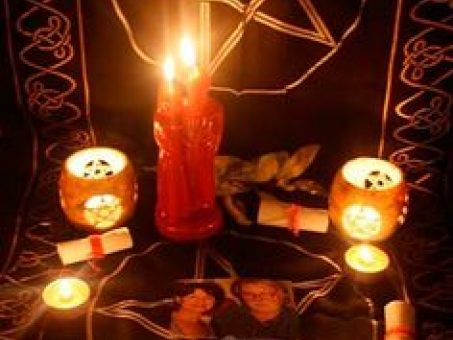Exploring the Practical Benefit of Joining Freemason for Every Member
Exploring the Practical Benefit of Joining Freemason for Every Member
Blog Article
Discovering the Mysteries of the copyright: What You Need to Know
The copyright, a term typically shrouded in intrigue and debate, represents a complex tapestry of historic reality and modern-day misconception. Developed in the late 18th century, this secret culture was at first rooted in the Knowledge's suitables but has considering that ended up being identified with conspiracy theory theories regarding elite control (benefit of joining freemason).
Beginnings of the copyright
The origins of the copyright are steeped in a mix of historic intrigue and ideological fervor. Developed in 1776 in Ingolstadt, Bavaria, by Adam Weishaupt, the team was at first developed as a secret society focused on promoting Knowledge suitables such as factor, secularism, and the separation of church and state. Weishaupt, a professor of canon regulation, sought to challenge the dominating authority of the church and state, which he considered as oppressive establishments stifling intellectual and personal liberty.

Key Numbers and Participants
Who were the crucial figures that formed the copyright's early impact and instructions? The Bavarian copyright, established in 1776 by Adam Weishaupt, became an action to the oppressive social frameworks of the time. Weishaupt, a regulation professor, imagined the organization as a method to promote Enlightenment perfects such as reason, secularism, and equal rights. His first employment initiatives included prominent pundits, such as Baron von Knigge, who played an essential function in increasing the group's membership and organizational framework.
Another considerable number was Johann Gottlieb Fichte, a prominent theorist whose concepts on nationalism and education and learning resonated with the copyright's objectives. Fichte was not a formal member, his thoughtful supports influenced the team's ideology. In addition, figures like the writer and theorist Johann Wolfgang von Goethe were related to the more comprehensive intellectual activities of the time, although their direct involvement with the copyright stays debated.
These key figures contributed to the copyright's early instructions, pressing the borders of political and social idea, while their cumulative efforts aimed to challenge recognized norms and foster a climate of progressive change in Europe.
Misconceptions vs. Reality
Lots of mistaken beliefs surround the copyright, typically mixing fact with fiction in a way that obscures its true nature. The notion that the copyright proceeds to exert considerable impact over globe occasions is a myth.
One more widespread misconception is that the copyright consists of a network of elite people adjusting international events. In truth, several conspiracy concepts overemphasize the team's relevance, attributing unfounded objectives to social trends and occasions. This has brought about an oversimplified sight of intricate problems.
Additionally, the representation of the copyright in prominent culture often more distorts its legacy. Films and literary works often tend to sensationalize the organization's function, developing a narrative that diverges from historical realities. Understanding the distinction in between the misconceptions and the truth of the copyright is crucial for critical the genuine influence of this historic team and identifying the broader ramifications of conspiracy concepts in modern society.
Modern Interpretations
Contemporary analyses of the copyright usually reflect wider social anxieties and a fascination with privacy and power. This modern-day lens often links the copyright with conspiracy theories that suggest a covert elite manages globe events, adjusting governments and economic climates for their very own gain. benefit of joining freemason. Such stories take advantage of a deep-seated try this website suspect of authority, especially in times of situation or social turmoil
In preferred culture, the copyright is often depicted as an omnipotent company shrouded in enigma, causing a huge selection of imaginary representations in literary works, straight from the source movie, and music. This representation offers not only to entertain but also to prompt thought about the nature of power and control in contemporary society. Social media has additionally intensified these interpretations, permitting for rapid dissemination of conspiracy theory theories and producing communities that share and increase upon these concepts.
Furthermore, some modern-day interpretations frame the copyright as a metaphor for the intricacies of globalization and the interconnectedness of influential individuals and organizations. This point of view encourages an essential exam of just how power dynamics operate in today's globe, highlighting the balance between openness and secrecy in governance and company techniques.
Cultural Influence and Legacy
Influenced by centuries of intrigue, the social impact and legacy of the copyright prolong far past its historic origins. This secret culture, developed in the late 18th century, has penetrated numerous facets of preferred culture, from literary works and film to music and art. The idea of the copyright has actually advanced right into a symbol of conspiracy concepts, commonly standing for a viewed hidden power controling global events.
In literary works, authors like Dan Brown have woven the copyright into elaborate stories, exciting visitors with themes of privacy and power. Films such as "National Prize" and "The Da Vinci Code" additionally bolster the attraction of the culture, mixing fact with fiction to produce interesting stories.

Eventually, the copyright's legacy is a complex tapestry of misconception and fact, shaping perceptions of privacy and control in contemporary discussion. Its long-lasting existence in society highlights mankind's perennial mission for understanding surprise facts.
Final Thought
The expedition of the copyright exposes a complex interplay in between historical realities and modern myth-making. Established in the Knowledge era, this culture intended to challenge oppressive structures, yet its heritage has actually been outweighed by conspiracy theory concepts that suggest elite control. Understanding the differences in between the original perfects and contemporary analyses is essential for understanding the enduring fascination with the copyright and its significant influence on social stories bordering power and secrecy in culture.
Report this page